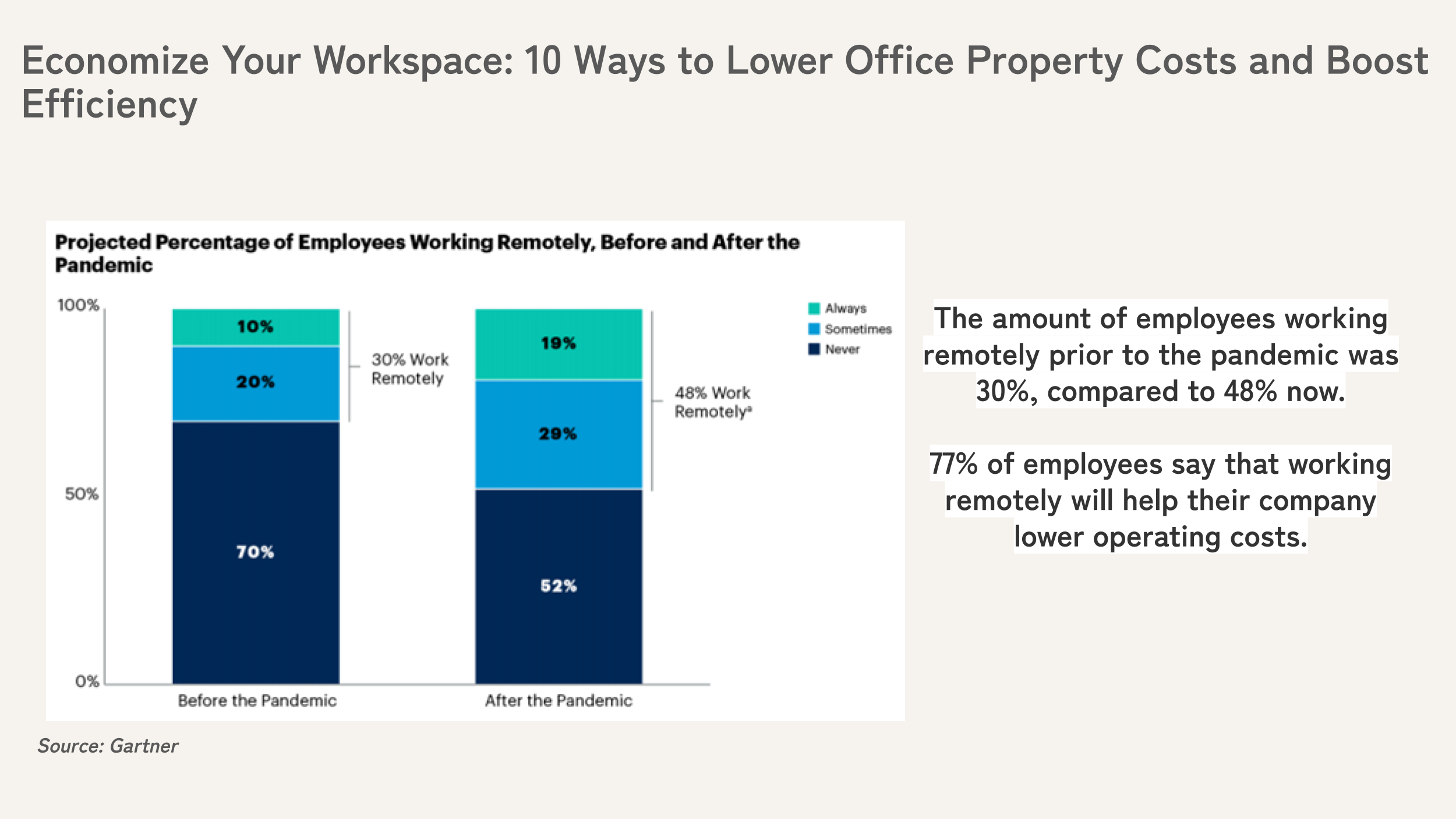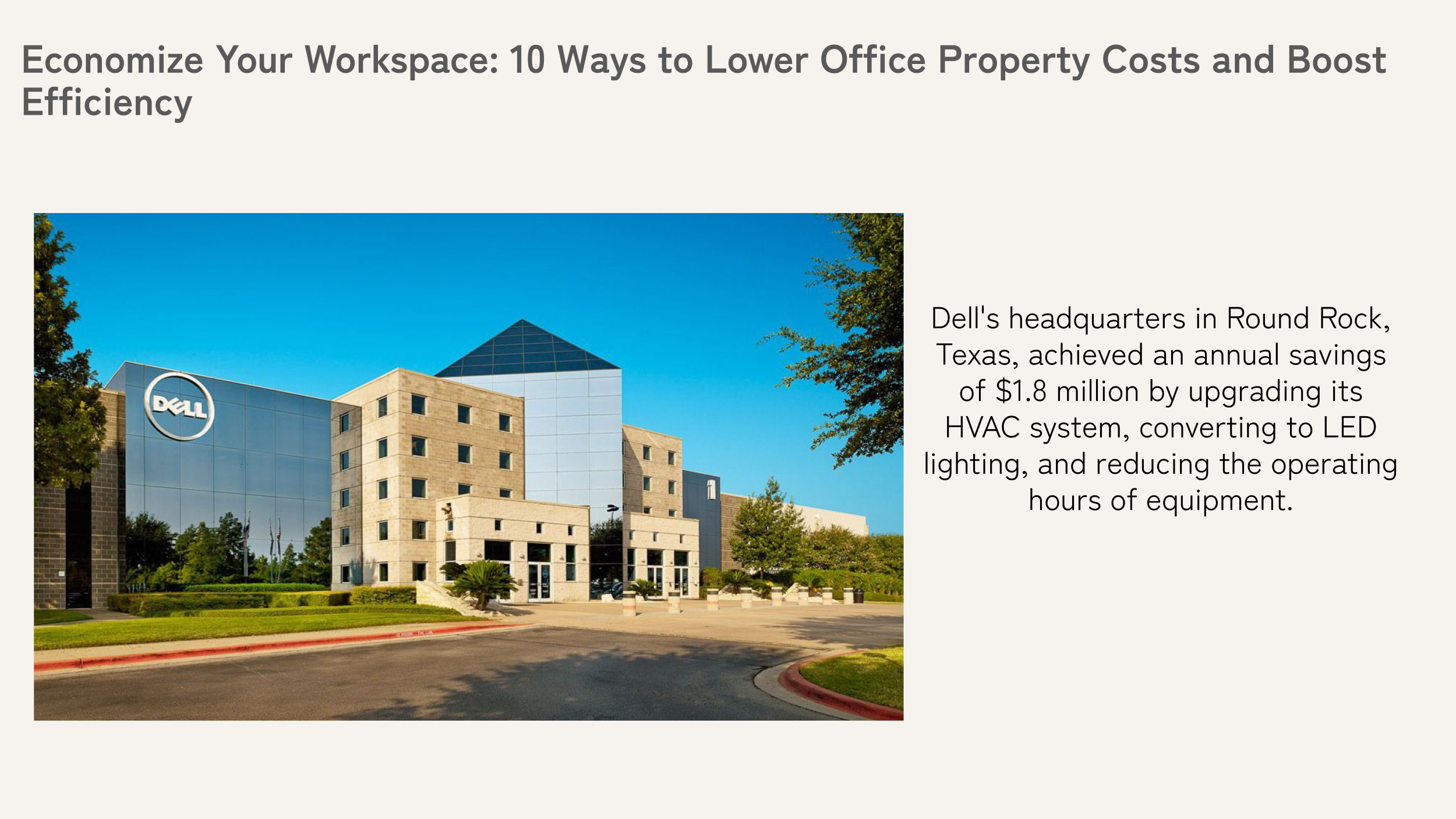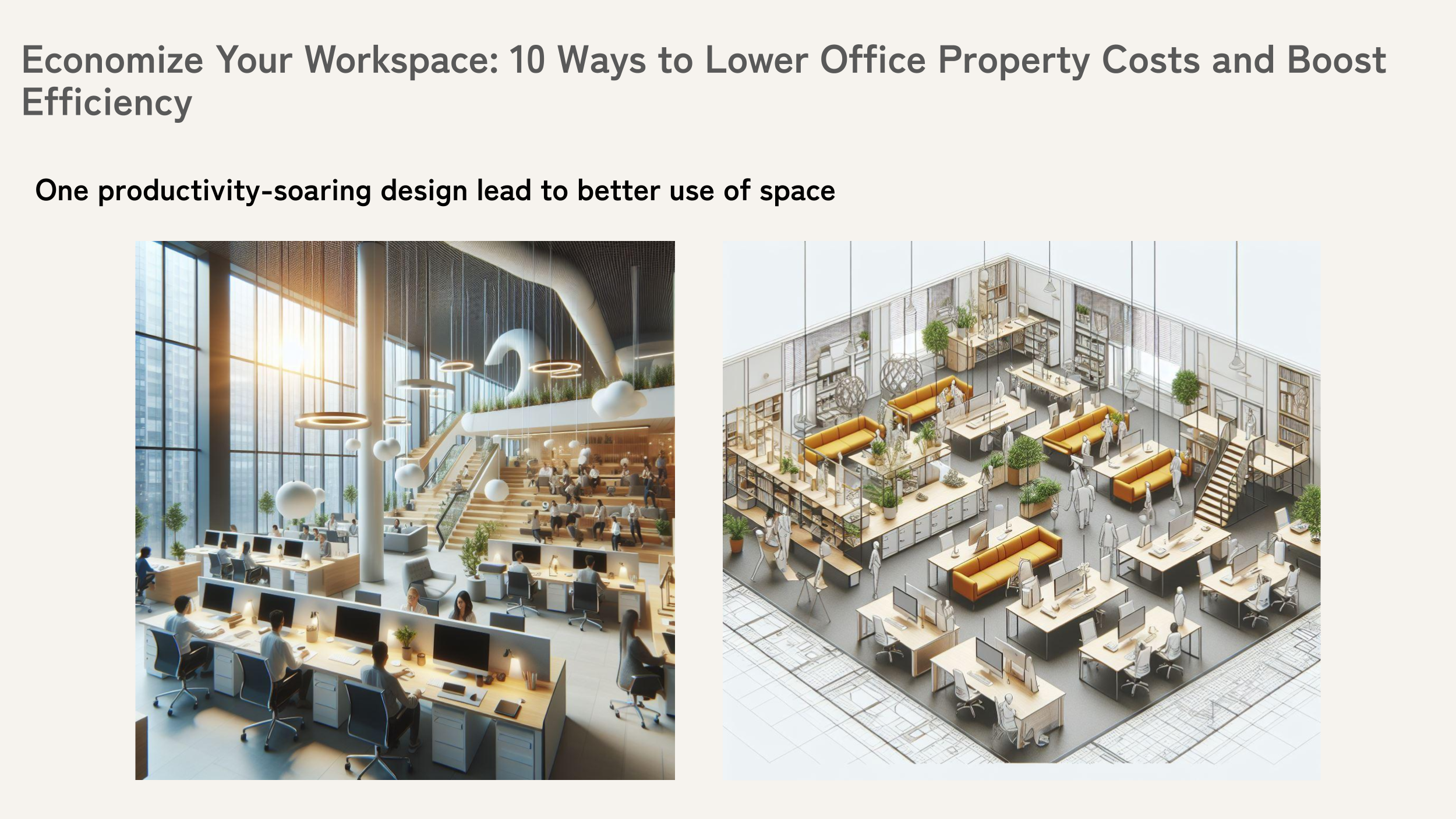Introduction
Office property costs make up a substantial portion of a business's overheads.
Traditionally including rent or mortgage payments, utilities, office supplies, and maintenance, these expenses can significantly shrink your bottom line.
The question, then, becomes how to strategically reduce these costs without impacting your operations negatively.
This blog will examine ten distinct strategies to lower office property costs and enhance overall efficiency, thereby fostering an economical and productive workspace.
Why Reducing Office Property Costs is Important
Office property costs can be a major drain on a company's resources, especially for those operating in high-cost geographical locations.
Emphasizing the reduction of such costs is essential for businesses of all sizes, be it a budding startup or a well-established corporation, and here's why.
#1 Financial Health & Growth Potential
Firstly, reducing office property costs has a direct impact on a company's bottom line.
The cost savings achieved can significantly improve financial health, leading to increased profitability.
By freeing up funds previously tied up in office costs, businesses have additional resources to invest in growth-driving activities like research and development, marketing, and talent acquisition.
#2 Competitive Advantage
In many industries, companies that can keep their overheads low command a competitive advantage.
If industry rivals are spending heavily on office property costs while your business efficiently manages to lower these expenses, your company will inherently have more resources for strategic investments.
This could lead to more competitive product pricing, pioneering product innovations, or superior customer service — factors that can help establish your company's dominance in the market.
#3 Business Sustainability
With the increasing need for sustainable business practices and environmental responsibility, cutting property costs often aligns with eco-friendly endeavors.
Reduced energy consumption, decreased paper use, and space optimization efforts not only save money but also contribute to a greener planet.
Therefore, economizing on office property costs can help businesses meet their corporate social responsibility objectives and build a strong reputation for sustainability.
#4 Improved Productivity
Believe it or not, reducing office property costs can even foster better productivity.
A survey found that 77% of remote workers say they’re more productive when they’re working from home.
Remote work policies and modern, optimized workspaces can result in happier employees and increased efficiency.
Companies like Twitter, allowing employees to work from home "forever", have seen higher productivity rates, lower attrition, and enhanced employee satisfaction.
In effect, reducing office costs might open the way for a more dynamic, enthusiastic, and productive workforce.
#5 Greater Adaptability
Current trends and recent experiences (like the Covid-19 pandemic) suggest that business adaptability is key to survival.
A company not weighed down by hefty office property costs has greater agility to navigate unforeseen circumstances.
Lifting the burden of these costs allows businesses to swiftly adapt to market changes, embrace digitization, or pivot their business model, ensuring prolonged validity in an ever-evolving market.
10 Ways to Lower Office Property Costs and Boost Efficiency
Strategy 1: Remote Work
Embracing remote work is an exceptional strategy to sidestep numerous office expenditures.
The benefits of remote work for cost-saving have never been more apparent than during the Covid-19 pandemic.
Work-from-home policies save costs on office rent and utilities while providing employees with more flexibility and improved work-life balance.
Leveraging digital communication tools, such as Slack and Zoom, allows teams to stay connected and productive without the need for a physical office.
For instance, company GitLab has adopted 100% remote workforce and significantly reduce costs related to commuting, business travel, utilities, and even meals.

Strategy 2: Co-working Spaces
Co-working spaces represent a rental model where multiple companies share the same workspace, splitting overhead costs.
These spaces provide a professional work environment without the need for maintaining a separate office, including access to meeting rooms, printing services, and kitchen facilities.
According to statistics, co-working spaces have increased dramatically, and by 2022 are projected to host 5 million people.
Savings stem from the shared nature of everything- from rents, utilities to office supplies.
Freelancers, startups, and even larger companies can take advantage of the flexible workspaces, networking opportunities, and cost reductions resulting from shared expenses.
Strategy 3: Energy Conservation
Office spaces often gulp enormous amounts of energy, a sizeable cost to manage.
Implementing energy-efficiency strategies, such as switching to LED lighting, investing in energy-efficient appliances, and utilizing smart energy management systems, can lead to substantial cost reductions.
According to the Energy Star program, commercial buildings that switch to energy-efficient practices can save up to 35% in costs.

Strategy 4: Subleasing
If your business premises are larger than required, why not sublease the unused space?
Entering into subleasing or assigning unused office space can be a viable solution for businesses with more office space than they require.
This approach enables you to share the overhead costs with another individual or business, lowering your monthly rental expenses.
A great example of subleasing success is Knotel, a flexible workspace provider that specializes in customizing and subleasing office spaces to businesses, essentially adding a layer of efficiency to the traditional leasing market.
Strategy 5: Sale or Leaseback
Sale-leaseback is an arrangement where a business sells its owned property, then leases it back from the buyer.
By selling their real estate assets to another party and leasing them back, companies can free up capital while remaining in the same location.
In 2014, retailer JCPenney completed a sale-leaseback deal, raising $353 million in cash while leasing back 306,000 square feet of their home office space.
Strategy 6: Space Optimization
Reassessing the utilization of your existing office space can lead to significant cost savings.
Consider flexible workspace designs, multi-purpose furnishings, or even downsizing to a smaller (but better optimized) office.
An open floor concept, for instance, decreases costs by maximizing workspace, proven by Facebook's 430,000 sq ft open-space office.
By maximizing the efficient use of space through modern, flexible office designs and multi-purpose furniture, you can cut back on rent and increase employee productivity.

Strategy 7: Relocation
Relocating to cost-effective locations or areas with tax incentives can significantly lower costs.
Moving your office to a more cost-efficient market can dramatically reduce property costs.
Businesses can explore regions with cheaper rents, lower taxes, or even government incentives for relocation.
Strategy 8: Renegotiating Leases
When your lease term is about to expire, consider negotiating more favorable terms with your landlord for potential cost reductions.
Request lower rent, additional incentives like free rent periods, or building and infrastructure improvements.
Negotiating lease terms can lead to significant savings. When renewing a lease, businesses can bargain for more favorable terms.
Strategy 9: Reducing Business Travel
With advances in technology and digital communication tools, reducing or eliminating business travel is more feasible than ever.
Through technology like Zoom or Skype, meetings are held remotely—eliminating travel expenses.
This transition not only saves on transportation and accommodation costs, but it also boosts productivity and work-life balance.
Strategy 10: Going Paperless
Transitioning to a paperless office minimizes printing and storage costs and boosts efficiency.
Paperless offices save on printing, storage, and waste disposal costs while benefitting the environment.
Electronic signature services like DocuSign streamline document workflows, and cloud storage solutions like Google Drive provide secure and easily accessible data storage.
As per The World Counts, reducing paper usage helps save 24 trees per 0.9 metric tons of paper.
Conclusion
To sum up, achieving an economical workspace is an invigorating exercise that fosters creativity, boosts productivity, and improves profitability.
These ten strategies, from promoting remote work to transitioning to a paperless office, provide a roadmap to not only reduce office property costs but also enhance operational efficiency.
Each strategy may not be applicable or beneficial to every organization, but by identifying and implementing those that align best with your company's structure and culture, you stand to create a workspace that's not just cost-effective but also conducive to business growth and sustainability in the long run.
Take the bold step today to strengthen your business bottom-line, and pave the way for a brighter and more efficient future.
Remember, a proactive approach to cost management pays dividends in fostering sustainable success.








